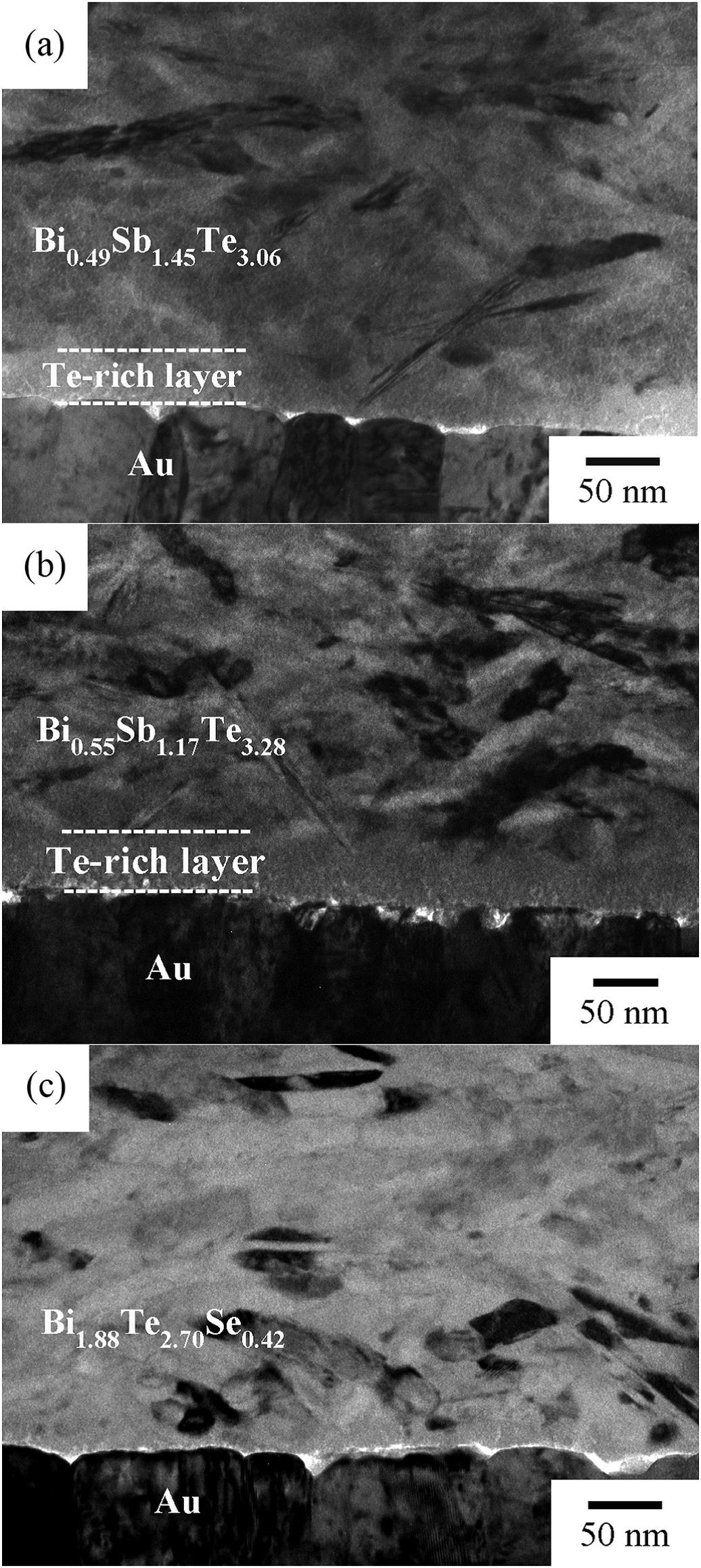

Electrodeposition of Bi2Te3-based p and n-type ternary thermoelectric compounds in chloride baths (by Prof. Chao-Sung Lin’s group)
The electrocrystallization of p-type Bi-Sb-Te and n-type Bi-Te-Se thermoelectric (TE) compounds in chloride baths was detailed in this study. Based on the cyclic voltammetry (CV) results, target p-type films can be electroplated using pulsed electrodeposition and the n-type films can be electroplated via potentiostatic electrodeposition. The n-type film shows a compact structure throughout the course of electrodeposition. The resulting 27-μm-thick Bi1.88Te2.70Se0.42 film has a Seebeck coefficient of −50 μV/K and a power factor of 130 μW/ m·K2 at room temperature. Conversely, nodular and dendritic p-type grains develop on top of a compact under layer as the electrodeposition proceeds. This development is accompanied by the disappearance of the nucleation loop in CV. Moreover, the presence of a distinct Te-rich layer was observed at the p-type film/substrate interface. The loose structure associated with nodular and dendritic p-type grains results in increased resistance and decreased power factor, but slightly influences the Seebeck coefficient. The p-type Bi0.45Sb1.22Te3.33 film with optimal thermoelectric properties is obtained via pulsed deposition with a thickness of around 2 μm and has a Seebeck coefficient of +150 μV/K and a power factor of 150 μW/m·K2 at room temperature. Finally, the electric resistance and uncompensated ohmic drop need to be considered for the electrodeposition of a compact p-type Bi-Sb-Te film with optimal TE properties. (This work has been published in (Thin Solid Films, 660, 108-119, (2018))



